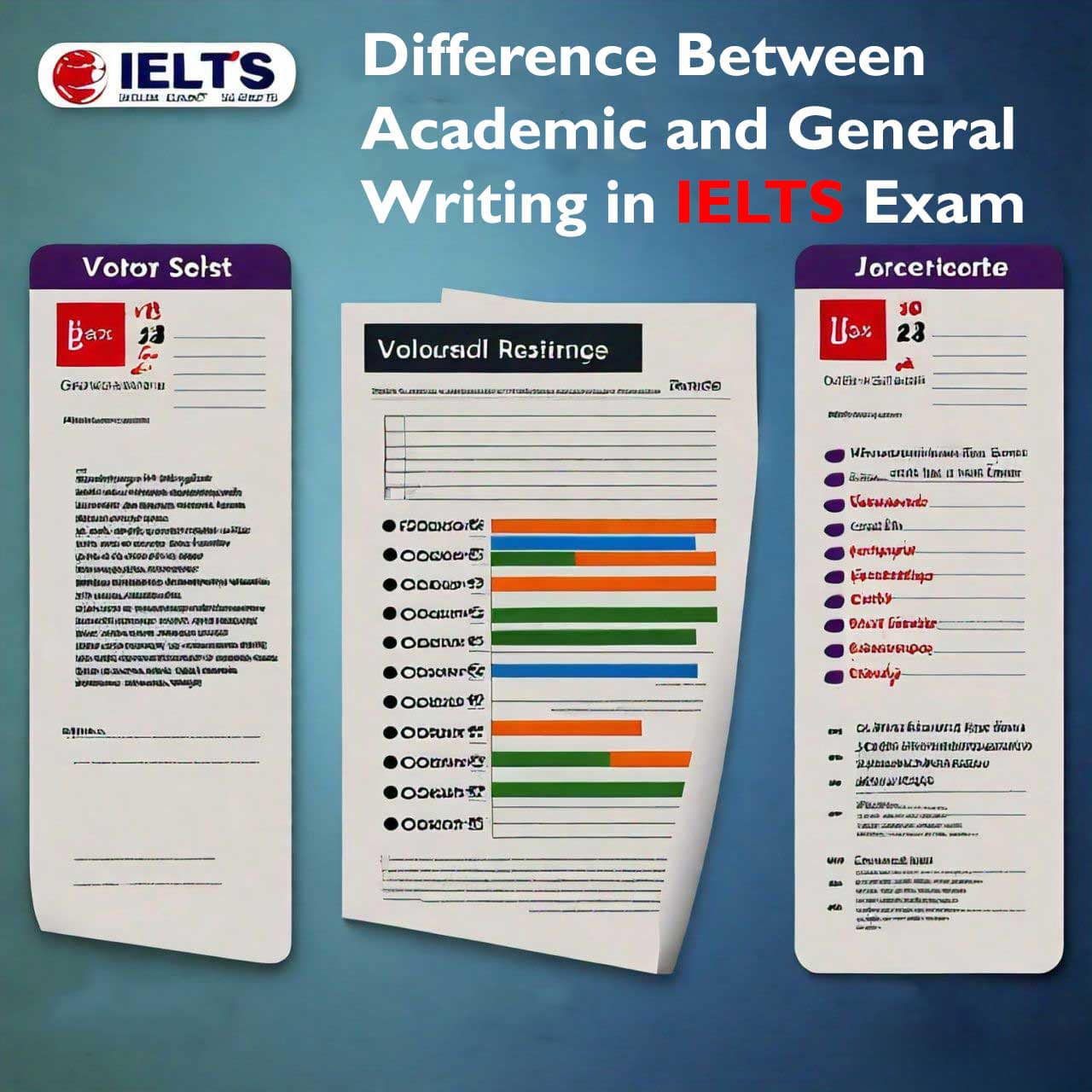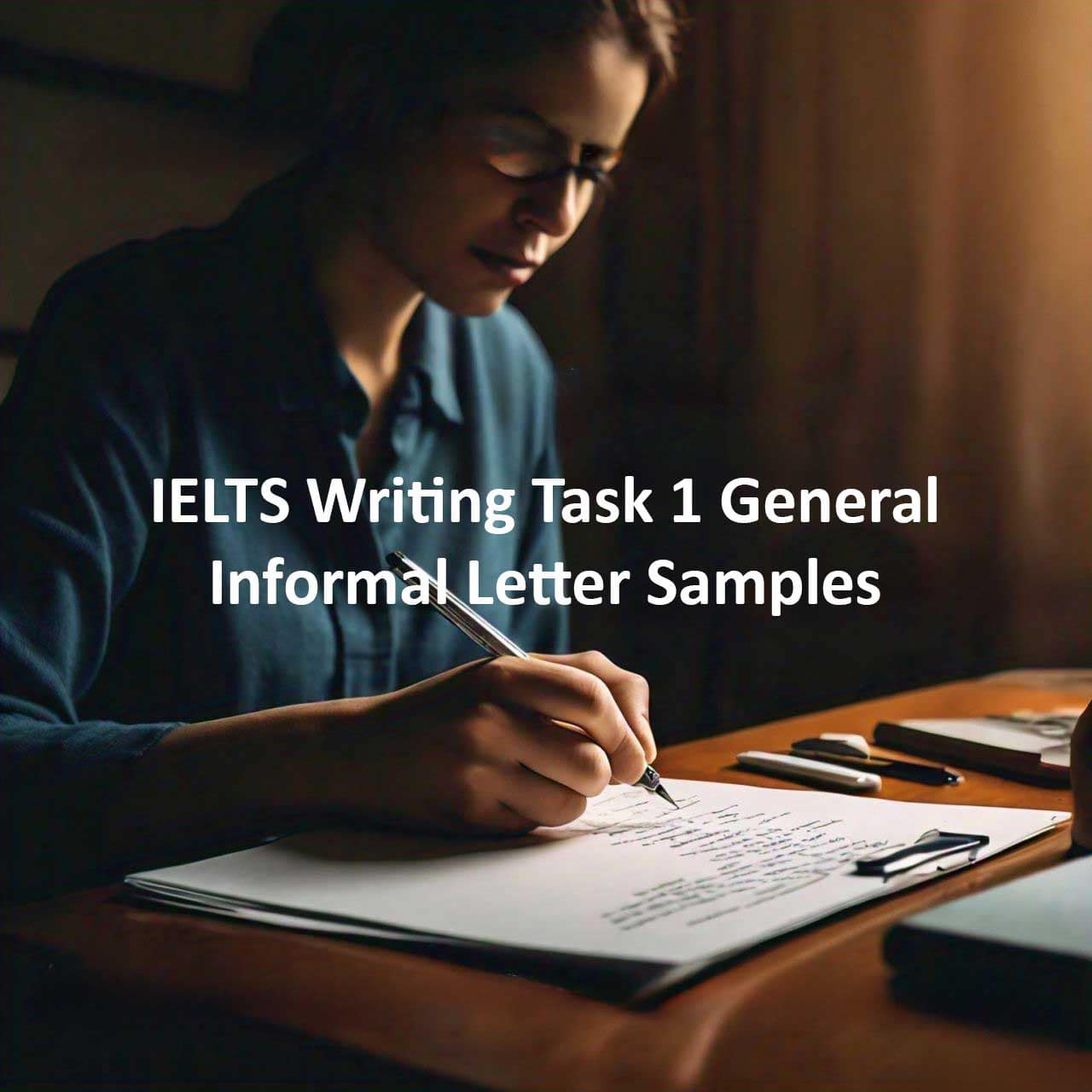The IELTS exam is divided into two versions: Academic and General Training. Both versions assess four key language skills—listening, reading, writing, and speaking—but the writing component differs significantly between the two. Understanding these differences is crucial for effective preparation and achieving a high score. In this blog post, we’ll explore the key distinctions between Academic and General Training Writing, focusing on the tasks, scoring criteria, and preparation strategies for each version.
Table of Contents
Purpose and Target Audience
The primary purpose of the IELTS Academic Writing test is to evaluate the writing skills of candidates who plan to pursue higher education or professional registration in an English-speaking environment. It targets students and professionals who need to write clearly and effectively in academic contexts.
In contrast, the General Training Writing test is designed for individuals who are moving to English-speaking countries for secondary education, work experience, training programs, or migration. This version assesses practical writing skills needed for everyday situations.
Task Breakdown
Both versions of the IELTS Writing test consist of two tasks, but the nature of these tasks varies:
Academic Writing:
– Task 1: You are required to describe, summarize, or explain information presented in a graph, table, chart, or diagram. This task involves writing a report of at least 150 words, focusing on the main features, trends, or processes depicted in the visual information.
Example: Describe the process of recycling paper as shown in a flowchart.
– Task 2: You need to write an essay in response to a point of view, argument, or problem. This task requires at least 250 words and involves presenting a clear, coherent argument, supported by examples and evidence.
Example: Discuss the advantages and disadvantages of living in a big city.
General Training Writing:
– Task 1: You are asked to write a letter based on a given situation. The letter could be formal, semi-formal, or informal, depending on the context provided in the prompt. This task involves writing at least 150 words.
Example: Write a letter to your landlord to discuss a problem with the heating system in your apartment.
– Task 2: Similar to the Academic version, you need to write an essay in response to a point of view, argument, or problem. However, the topics are generally more related to everyday issues and practical matters.
Example: Some people think that it is better to live in the countryside. Do you agree or disagree?
Scoring Criteria
Both versions of the IELTS Writing test are assessed based on four criteria:
1. Task Achievement (Task 1) / Task Response (Task 2): Measures how well you address the task requirements, including covering all key points and presenting a clear, relevant response.
2. Coherence and Cohesion: Assesses the logical organization of your ideas and the use of linking words and cohesive devices to create a clear and coherent text.
3. Lexical Resource: Evaluates the range and accuracy of your vocabulary. Using a variety of words and expressions and demonstrating the ability to paraphrase effectively are important.
4. Grammatical Range and Accuracy: Assesses your use of grammar, including sentence structure and complexity, as well as the accuracy of your grammatical usage.
Preparation Tips for Academic Writing
1. Practice Describing Visuals: Get comfortable with interpreting and describing graphs, tables, charts, and diagrams. Practice summarizing the main features and trends.
2. Develop Analytical Skills: Focus on analyzing information and presenting it logically and coherently in your writing.
3. Expand Academic Vocabulary: Build a strong vocabulary to describe data and trends accurately. Use varied and precise language.
4. Practice Essay Writing: Write essays on a variety of topics, ensuring you present a clear argument and support it with relevant examples.
5. Time Management: Practice completing both tasks within the allotted 60 minutes to ensure you can manage your time effectively during the test.
Preparation Tips for General Training Writing
1. Practice Letter Writing: Get familiar with writing different types of letters—formal, semi-formal, and informal. Pay attention to the appropriate tone and structure.
2. Focus on Everyday Topics: Write essays and letters on common, practical topics you might encounter in daily life.
3. Use Real-Life Scenarios: Think about real-life situations that require written communication, such as writing to a friend, a company, or an authority figure.
4. Expand Practical Vocabulary: Build a vocabulary that is relevant to everyday situations and practical matters.
5. Review Writing Samples: Study sample letters and essays to understand the format and language used in the General Training Writing tasks.
Conclusion
Understanding the differences between the Academic and General Training Writing tests is essential for effective preparation and success in the IELTS exam. Each version has its unique requirements and focuses on different writing skills, tailored to the needs of its target audience. By recognizing these distinctions and following the preparation tips provided, you can approach the IELTS Writing test with confidence and achieve a high score. Whether you are aiming for academic success or practical proficiency, thorough preparation and practice are the keys to your success.



